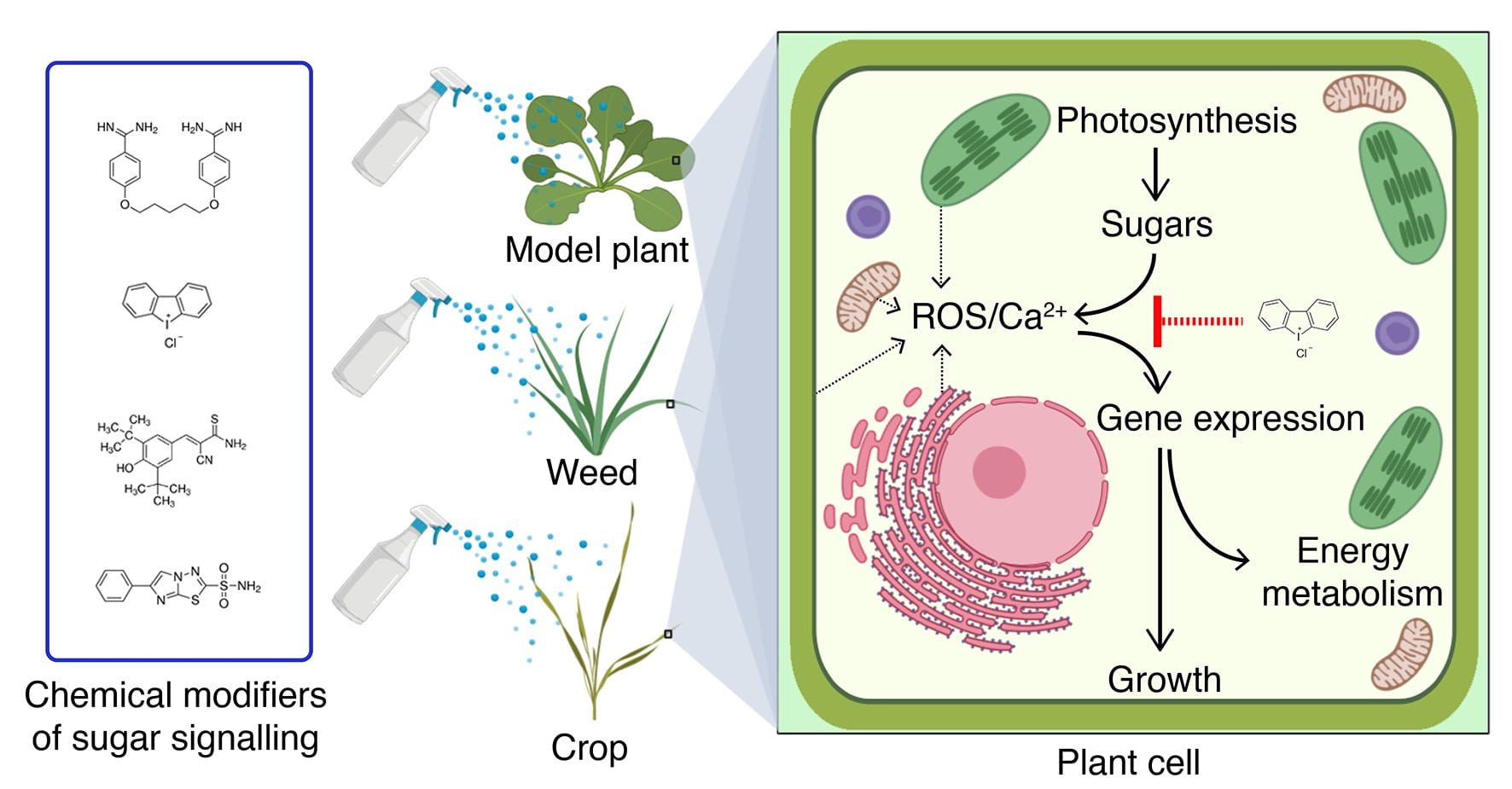Research
How do plants tell time?
 The circadian system is a biological time-keeper comprised of inputs (light, temperature, stress), an oscillator (a gene regulatory network) and outputs (physiology, metabolism, development). It influences almost all aspects of the plant and allows them to anticipate daily changes in the environment and adapt to seasonal conditions (Haydon et al., 2019). The circadian clock is a core focus of research in the lab. Our main interest is to define the roles of metabolism and nutrition within the plant circadian system (Buckley et al. 2023). We study these processes in the model plant Arabidopsis thaliana, as well as wheat, a cereal crop of major global importance. We consider mechanisms of gene transcription, translation and post-translational control that influence circadian rhythms. Our research aims to make advances to understand fundamental aspects of plant cell biology, but also generate opportunities to develop crops that match specific growth environments.
The circadian system is a biological time-keeper comprised of inputs (light, temperature, stress), an oscillator (a gene regulatory network) and outputs (physiology, metabolism, development). It influences almost all aspects of the plant and allows them to anticipate daily changes in the environment and adapt to seasonal conditions (Haydon et al., 2019). The circadian clock is a core focus of research in the lab. Our main interest is to define the roles of metabolism and nutrition within the plant circadian system (Buckley et al. 2023). We study these processes in the model plant Arabidopsis thaliana, as well as wheat, a cereal crop of major global importance. We consider mechanisms of gene transcription, translation and post-translational control that influence circadian rhythms. Our research aims to make advances to understand fundamental aspects of plant cell biology, but also generate opportunities to develop crops that match specific growth environments.
Metabolic signals in the circadian system
We have previously shown that sugars, which are the major product of photosynthesis, affect circadian rhythms in numerous ways. There is transcriptional control of circadian period by sugars which requires the metabolic sensor SnRK1 (Haydon et al., 2013; Frank et al. 2018). Sugars also affect amplitude of rhythms by post-transcriptional control of GIGANTEA (Haydon et al. 2017). More recently we have used the regulation of the circadian system by sugars to identify additional mechanisms of dynamic metabolic signalling in plant cells. Our approach has combined the power of transcriptomics and chemical biology to reveal a new role for superoxide, a reactive oxygen species (ROS), which influences transcriptional responses to sugars and growth (Román et al., 2021). Current projects in the lab aim to define how sugars generate this metabolic signal and how it controls gene expression (Li et al., 2022). The chemical biology approach allows us to investigate conservation of the signalling pathway in other plants, including crops and weeds.
Chronoculture: an emerging opportunity to improve crop production

Chronoculture is an emerging concept which aims to leverage knowledge of circadian clocks to improve efficiency in crop production (Steed et al., 2021). It encompasses temporal precision agriculture, modifying farming practices, optimising artificial environments, and informing breeding or gene-editing strategies. A functional understanding of circadian clocks in crops is urgently required to adapt to climate change because it will enable growers to maximise yield by matching cultivars to changing regional conditions and to meet the growing potential of agriculture in artificial environments. Because of their strong influence on heading date (flowering time), variants in circadian clock genes have been selected by phenology during domestication of cereal crops. We are currently using wheat to understand the impact of circadian clock variation on agriculturally important traits, such as grain quality (Buckley et al. 2024) and heat tolerance, and ultimately develop strategies to improve crop performance in future climates.
Support
Research in the lab has been made possible by past and present funding from the BBSRC, The Royal Society, the Australian Academy of Science, the Hermon Slade Foundation and the GRDC, with additional support from the University of York, The University of Melbourne and the Botany Foundation.





